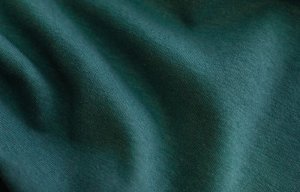
Spinnova and Renewcell cooperate on circularity
Cotton that is not suitable for reuse can be dissolved to make cellulose solution, which can be turned into new fibre, the institution reports.
-612x408-boxed.jpg)
23rd September 2015
Knitting Industry
|
Espoo
 The VTT Technical Research Centre of Finland has developed an innovative cellulose dissolution technique to turn old worn-out cotton clothing into new fibres that can be used again by the textile industry.
The VTT Technical Research Centre of Finland has developed an innovative cellulose dissolution technique to turn old worn-out cotton clothing into new fibres that can be used again by the textile industry.
Advancements in recycling technology are challenging both consumers and businesses – as of 2016 organic waste in the form of clothing may no longer be disposed of by landfill.
The Circular Economy of Textiles (TEKI) project, launched by a group of Finnish organisations, is aimed at piloting and modelling a closed-loop ecosystem in line with the principles of the circular economy, which will find a new way to make industrial use of textile waste that cannot be reused.
For the purpose of the TEKI project, VTT and Ethica, a Finland based provider of training on strategic sustainability and circular economy, have brought together a group of Finnish organisations representing different activities in the value chain. The common goal of the organisations is to promote the recycling of textiles while adding value to their business activities or creating new business.
As part of the project, the new production technique will be put to practice, analysing all stages of the value chain during 2015 and 2016. The cellulose wet-spinning is due to begin at VTT’s pop-up plant in Finland this October. The first clothing line made of the new recycled fibres will be out towards the end of 2016.
Ethica’s role in the project is to research and model the potential of a closed-loop textile ecosystem more comprehensively and to gauge consumers’ interest in operating models that are based on the principles of circular economy and recycled materials. The project also aims to study the technological requirements of dissolution-based recycling.
Cotton that is not suitable for reuse can be dissolved to make cellulose solution, which can be turned into new fibre, the Research Centre reports.
.jpg)
Cellulose fibre can be produced using the same technique and equipment that has been used to make viscose fibre for decades, but the new production technique appears to be considerably more environmentally friendly than the technique used for viscose, as no carbon disulphide is needed in the dissolution process, the researchers say.
Compared to virgin cotton, the new technique is also said to reduce the water footprint by more than 70% and the carbon footprint by 40–50%.
“The wet-spinning phase of the project is due to begin in a month’s time in a factory in Valkeakoski that has not been in use for a couple of years,” explained Pirjo Heikkilä, VTT’s Senior Scientist, who is responsible for coordinating the TEKI project.
“Work done prior to this phase involves processing and dissolving pre-processed waste textiles. This is the first time that cellulose solution made from recycled materials is being wet-spun in an industrial scale. The fibre will be used to make new knitted fabrics.”

Business intelligence for the fibre, textiles and apparel industries: technologies, innovations, markets, investments, trade policy, sourcing, strategy...
Find out more